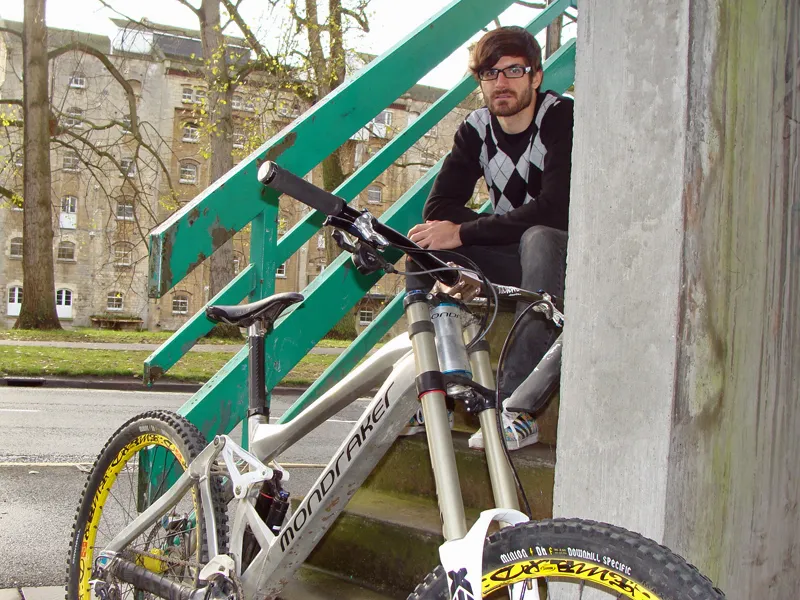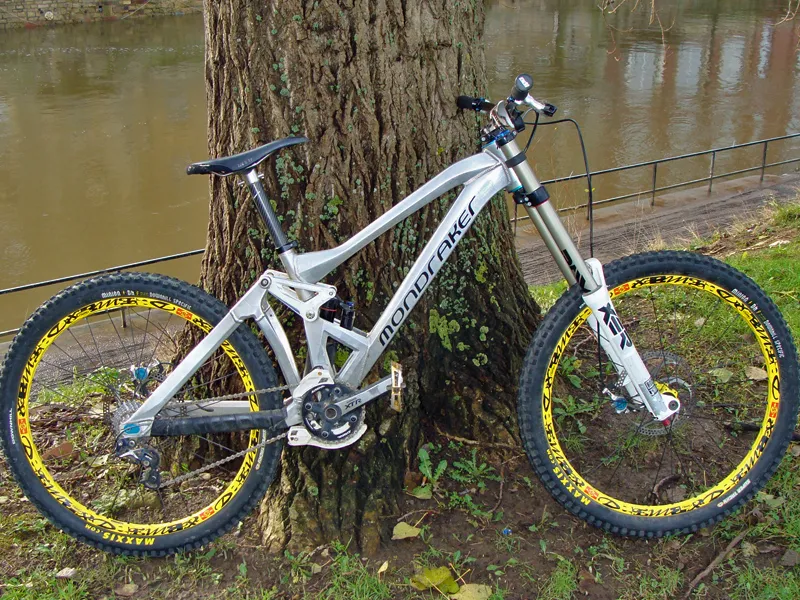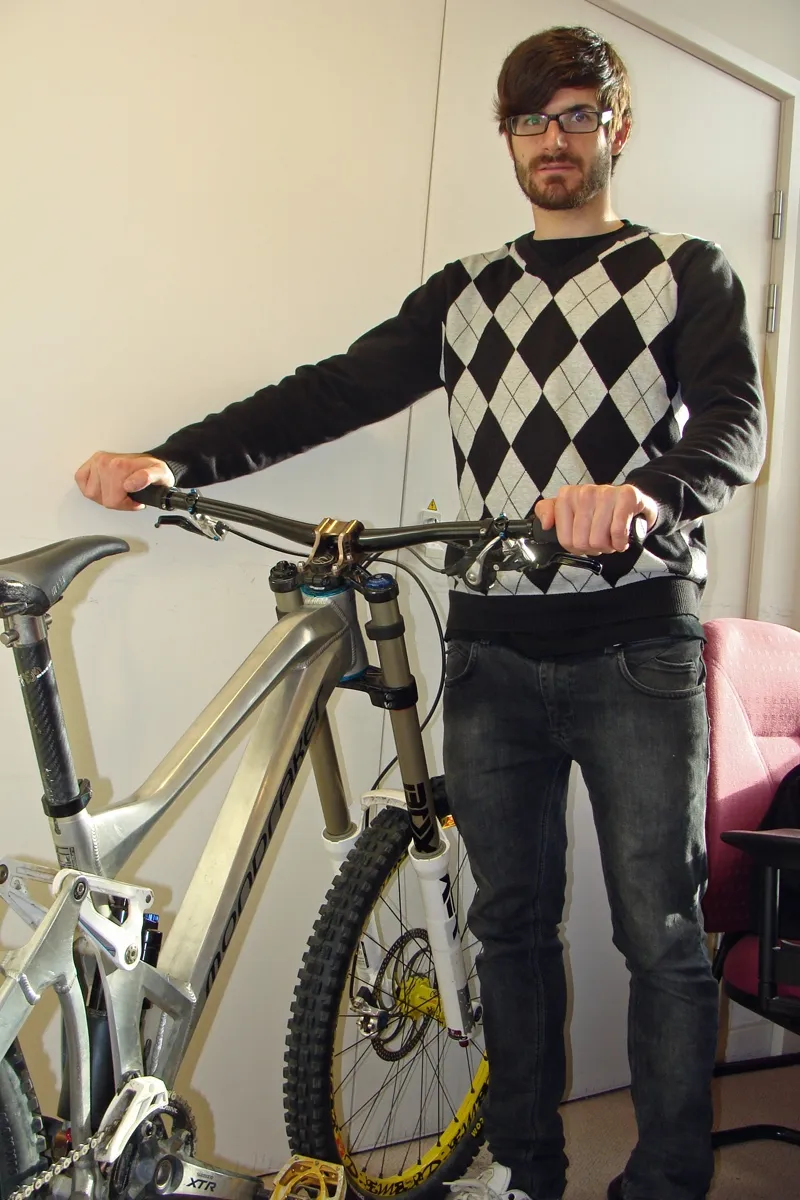After a seven-year ‘break’ designing racing motorbikes for KTM, Cesar Rojo burst back onto the mountain bike scene this year with the launch of his first downhill bike and his return to the World Cup start list.
The chilled-out Catalan, who made his name on Martin Whiteley's world-beating Global Racing team alongside the likes of Greg Minnaar and Matti Lehikoinen, took time out from his busy schedule to show us his latest creation, the Mondraker Summum.
“I raced for Global for two years and my best finish was sixth at Les Gets, in my last race!” He laughs. “Seeing Fabien (Barel) on top of the podium in Maribor with the Summum is probably the best moment of my life so far though. We’d worked a lot together that year and it was an amazing moment for both of us.”
The Summum is, like its creator; pretty remarkable. The machine sitting in front of us is Cesar’s own ride and the culmination of nearly three years' work. He contested four World Cups aboard this very bike this year and his new-found privateer status had a big influence on the final production bike.
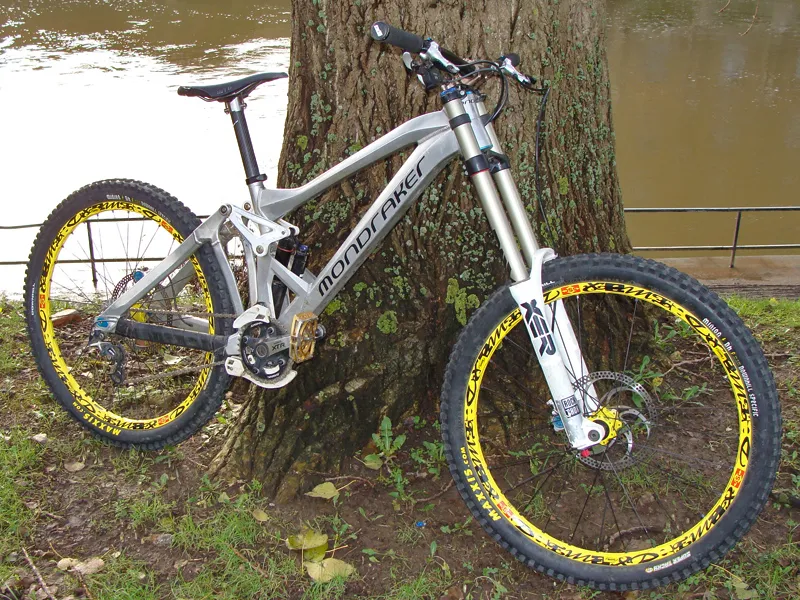
Mondraker's Summum looks to be one of the must-have downhill bikes of 2010
“From the start, I was building this bike around exactly what I wanted both as a racer and as a customer," he says. "Coming back to racing as a privateer gave me a whole new insight into what I’d want from a bike.
“I wanted adjustability to be at the heart of the bike. For factory racers, everything is custom-made but every customer is different. This is a race bike first and foremost, and everyone should be able to set it up perfectly for them.
“The amount of adjustability on our bike means you can pick and choose geometry from your previous favourite bikes or try out new setups without having to buy a whole new bike.”
The Summum is typical of the ‘new school’ of downhill bike thinking. It’s extremely light, low and visibly slack. “We set the benchmark at 65 degrees and supply the bike with two sets of adjuster cups giving /-1 degree and /-2 degrees,” Cesar says.
The back end is similarly adjustable, offering four different chainstay lengths courtesy of some neat interchangeable CNC-machined plates.
“I always believed that longer chainstays were better for riding position and allow more grip on the front end but Fabien was always riding very short ones,” Cesar says. “He tried the longer ones at Maribor, where it’s very steep, and ended up really liking them.”
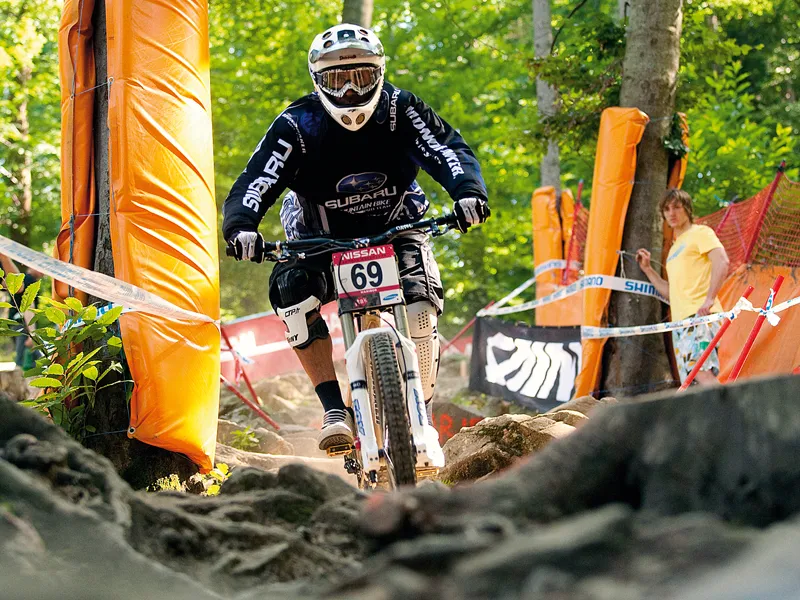
Team rider Fabien Barel piloting his Summum to victory at this year's Andorra World Cup
Barel’s input into the bike's development has been key, and barring some lighter weight tubing, his frame is stock. “Fabien had a lot of input into the geometry. We started the season with a base setting that he liked and then altered it as the season went on,” Cesar says.
“The best thing about working with him is that he’s really open-minded. Of course he knows how he likes a bike to be set up, but he’s willing to give your ideas a try. We spent two weeks at his tracks in the pre-season just working on the bike and trying out new things.”
Rojo’s enthusiasm for the Summum is infectious; it’s clear how much of himself has been poured into it. The bike bristles with little tweaks and details gleaned from years of racing.
The head tube is super-low to help get the rider's weight over that raked out front, the cable routing is internal and the Zero suspension system is a work of art.
“I’d always loved floating shock systems and they’d been used in motorbikes for years,” Cesar says. “Strength-wise we were able to control more of the forces on the frame and eliminate a lot of the shock hardware downhill bikes tend to accumulate. The Dune was the first bike we launched the Zero system on, and we’re looking to expand its use across the range for 2010.”
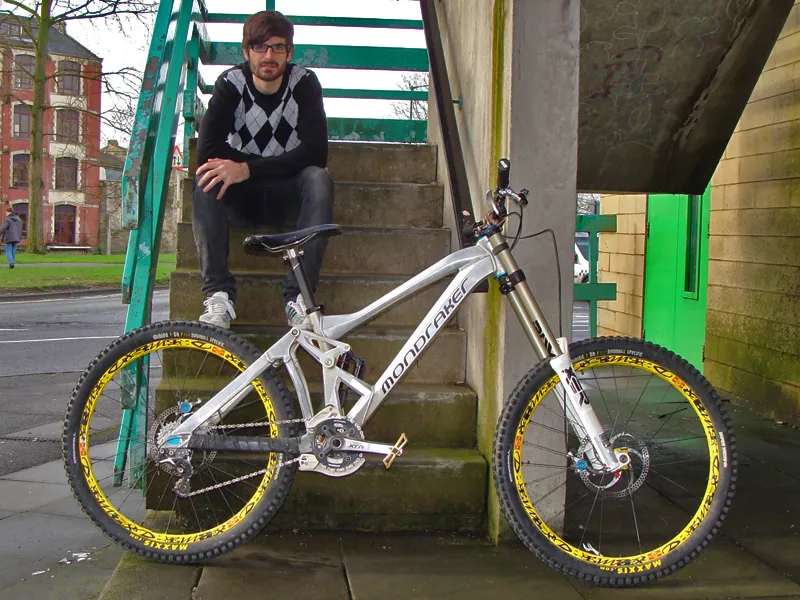
Rojo drew upon his experiences as a privateer racer while designing the Summum
As with most designers, Rojo is a perfectionist and even as dealers start clearing space for the arrival of the first Summums he’s already thinking of ways to eke even more speed from the bike.
“At some stage in the future I’d love to make a stripped down race-only model and really try to push the envelope with how quick we can make this platform," he says. "At the minute, though, I think it offers the best combination of strength and weight.
“Mondraker aren’t a huge company so we have to offer something more to the customer, hence the adjustability and the weight. It’s lighter than a lot of other frames out there but it’s not risky; we’ve never compromised on strength.”
Look out for a full review of the Mondraker Summum in Mountain Biking UK magazine soon. If it’s half as special as we get the impression it will be, it’ll be one hell of a bike.
